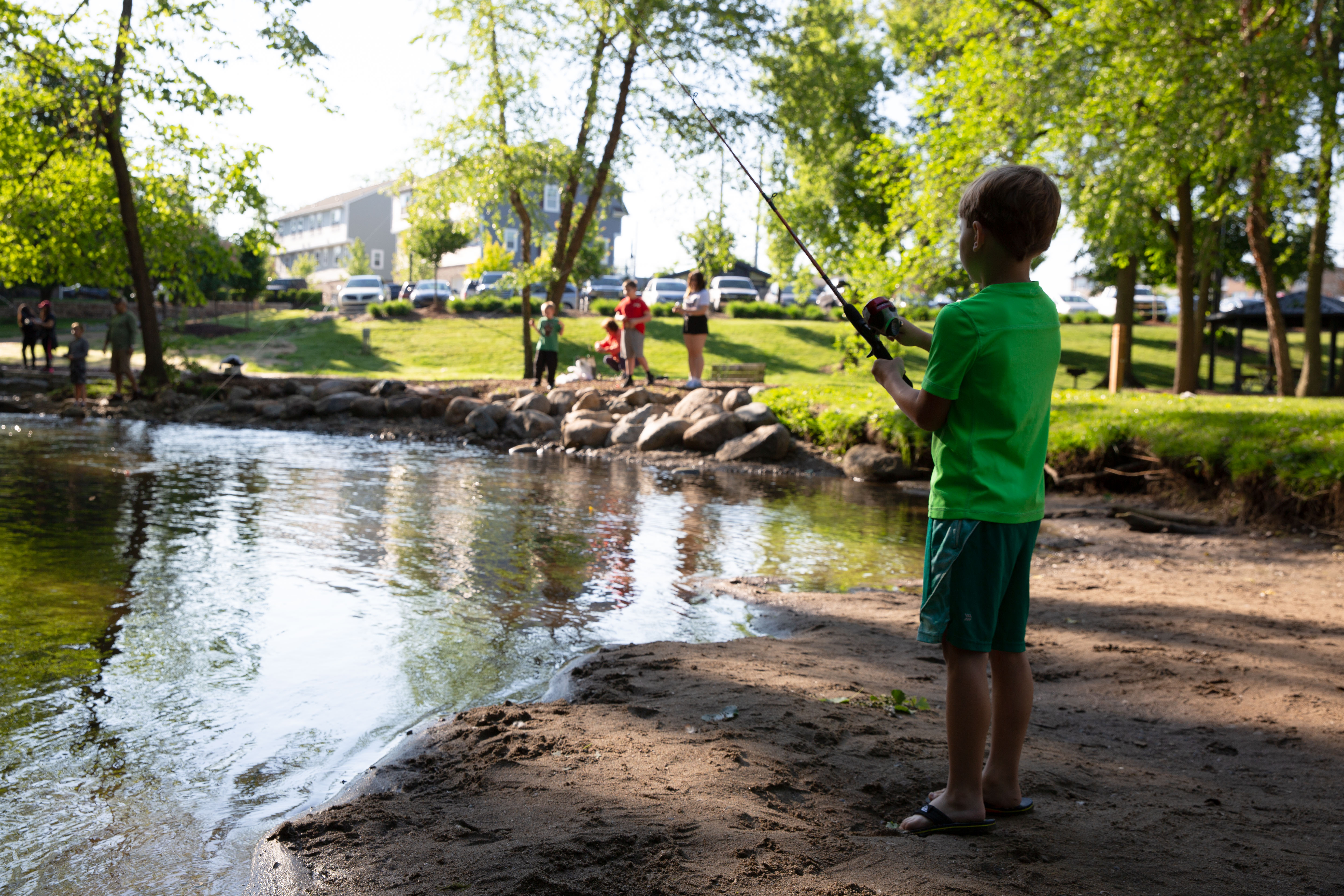Stormwater Pollution and Why it Matters
Posted on: August 19, 2024
Here in the City of Auburn Hills, we have access to a varied and beautiful landscape, with the Clinton River standing out as a central feature. The Clinton River, along with the city’s lakes and streams, not only enhances our environment but also provides recreational opportunities for residents and visitors. As we enjoy these natural resources, however, it’s crucial to recognize the growing challenge of stormwater pollution. In this blog series, we’ll explore ways to protect our water features.

Why Stormwater Pollution Matters
It might surprise you to learn that pollution often begins right where we live. While industries contribute a small fraction of pollution—around 2%—the bulk comes from everyday activities. When development alters our environment by replacing vegetation with impervious surfaces like streets and rooftops, the natural process of water soaking into the soil is disrupted. Instead, rainwater flows more quickly over these surfaces, carrying pollutants directly into our rivers, lakes, and streams.
The Path of Stormwater
Our city streets are equipped with storm sewer inlets, which channel rainwater into underground pipes. Unlike wastewater from homes and businesses, this stormwater doesn’t go to a treatment plant. Instead, it flows straight to our local water bodies. This system, designed to swiftly manage storm events, unfortunately also accelerates the transport of pollutants into our rivers and streams.
Common Pollutants and their Effects
Pollutants can come from various sources and have a range of impacts on our waterways:
- Sediment – Bare soil from construction sites or erosion can be washed into water bodies. This sediment can:
- Smother fish spawning areas and habitats for aquatic insects.
- Block light needed for underwater plant growth.
- Carry additional pollutants like fertilizers and bacteria.
- Nutrients –Phosphorus and nitrogen from fertilizers, pet waste, and yard debris can lead to excessive algae growth, disrupting aquatic ecosystems.
- Toxic Chemicals –Household products like cleaners, paints, pesticides, and automotive fluids contain harmful substances that can poison aquatic life.
How You Can Help
Protecting our local waters doesn’t require a significant investment. Simple, proactive steps can make a big difference:
- Join the Clinton River Watershed Council – As a member, you can engage in citizen-led efforts to protect our waterways. Visit www.crwc.org for more information.
- Participate in Local Events – Get involved in events like River Day in June and the Clinton River Clean-Up in September to contribute hands-on support for our water bodies.
- Visit Ours to Protect – Explore additional resources and tips at www.semcog.org/ourstoprotect.aspx.
If you notice pollution or have concerns, don’t hesitate to contact the Department of Public Works at 248-391-3777.
Stay tuned for a series of blog posts exploring practical advice for reducing stormwater pollution.